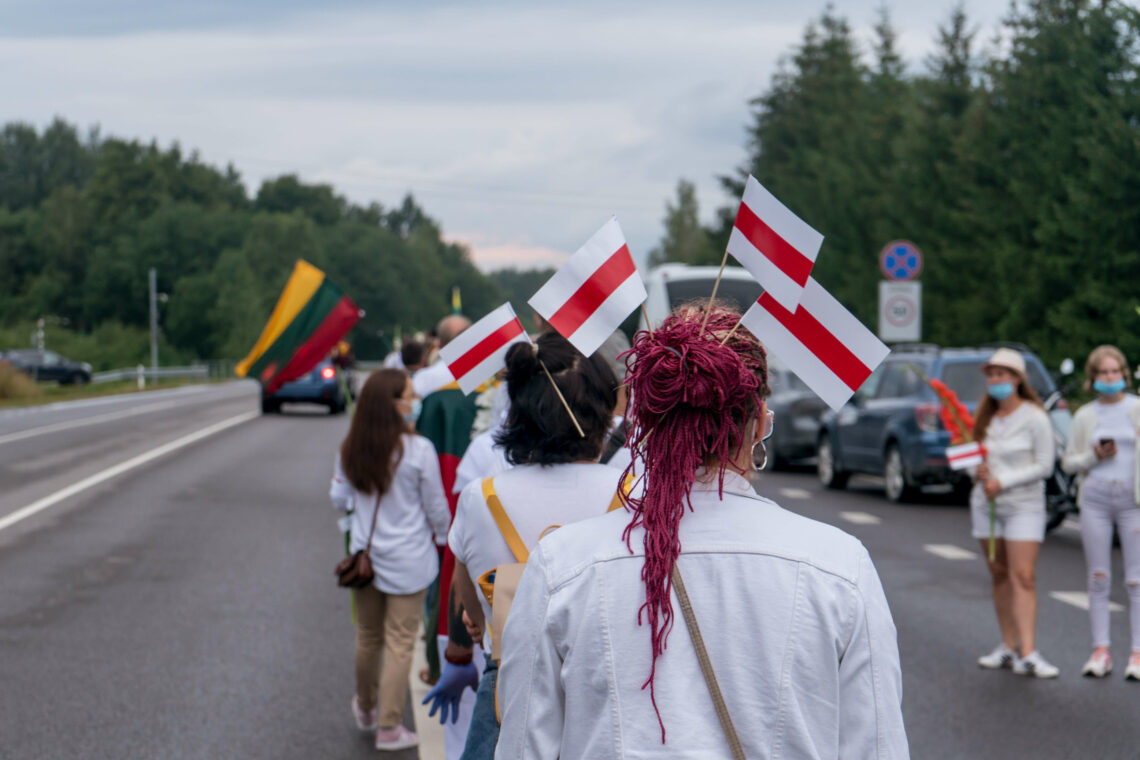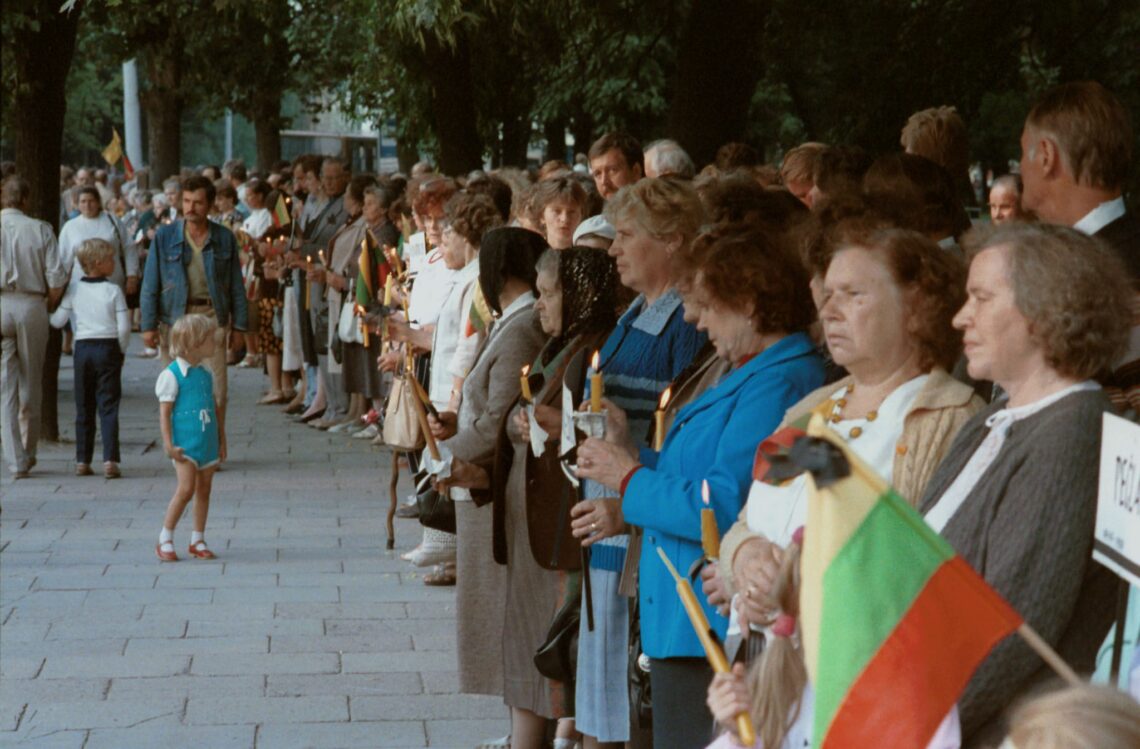Lithuania in the limelight
By urging NATO and the EU to show their support for Belarus, Lithuania is risking Russia’s ire. Military intervention is unlikely but cannot be ruled out. However, the most likely course of action for the Putin administration is to leverage its influence in Lithuanian energy markets.

In a nutshell
- Lithuania is the most vocal critic of the Lukashenko regime
- The country’s proximity to Kaliningrad poses a security risk
- The Kremlin is most likely to resort to economic pressure
The crisis in Belarus has suddenly cast a geopolitical spotlight on neighboring Lithuania with sparking protests against the Lukashenko regime. The country offered a safe haven to Belarusian opposition activists, including opposition leader and presidential candidate Svetlana Tikhanovskaya. Vilnius has also taken the lead in urging the European Union to impose sanctions on the regime of Alexander Lukashenko. In the words of Lithuanian Foreign Minister Linas Linkevicius, the EU’s approach has been far too slow to get a reaction off the ground: “It is not enough to judge, to assess, to condemn, there should be actions.”
Given the Kremlin’s track record in dealing with smaller independent-minded neighbors, this stance may come across as a high-wire act. But the protests in Lithuania against Lukashenko are merely following the country’s well-established pattern of fearlessness toward Russia. And Lithuanians are showing widespread support for their government.
Intertwined history
On August 23, 2020, tens of thousands of people joined hands in a human chain that stretched 32 kilometers from the capital Vilnius to a memorial on the Belarusian border. Dubbed the “Freedom Way,” the gesture was a powerful show of solidarity with Belarusians fighting for democracy. The date was symbolically charged. On the same day in 1989, more than a million people formed a human chain across Lithuania, Latvia and Estonia in protest against the Soviet occupation. For a great many Lithuanians, their support for Belarus is intensified by the memories of their own struggle for freedom.
Ever since the crisis in Ukraine, Russia has been upgrading its garrison in Kaliningrad.
In its ambition to stand up for Belarus and protests against the Lukashenko regime Lithuania has found a natural partner in Poland. Lithuanian member of the European Parliament Petras Austrevicius, who was denied entry at a checkpoint on the Belarusian border along with his Polish counterpart Robert Biedron, said: “It can be explained by our geographic proximity, the intertwined history, the trade and so on. I believe that our northern partners, including Latvia and Estonia, should show more solidarity with us on Belarus.”
Lithuania has also welcomed the European Humanities University. Founded in Minsk in 1992 as a private, nonprofit liberal arts university, it was closed by the Belarusian authorities in 2004. Bent on one day being able to return home, it has thrived in Vilnius as a Belarusian university in exile. As many opposition activists are presently forced to go abroad, it is bound to increase in importance.
The government in Vilnius has three sets of reasons to be concerned about Russian reactions to such high-profile foreign policy plays. The most blatant (and least likely) is the risk of military confrontation. While membership in NATO provides a security guarantee, proximity to Russia in a strategically critical region does complicate the matter.
The military threat revolves around the Kaliningrad exclave. Heavily garrisoned, it provides the Russian military with an effective lock on approaches to the Baltic Sea. In military terminology, it constitutes a “bubble” of A2/AD (Anti Access and Area Denial) capabilities. Sensors and missiles deter any intruder from entering the protected zone. NATO forces seeking to pass would suffer heavy casualties.
Ever since the crisis in Ukraine, Russia has been upgrading its garrison in Kaliningrad. In addition to introducing nuclear-capable Iskander missiles and Kalibr cruise missile-equipped corvette, it has reestablished a mixed aviation division, with two aviation regiments. The deployment includes modern Su-30SM multirole fighter jets. A new mechanized infantry division is also to be added, capable of operating without reinforcements from the Russian mainland.
The problem for Russia is that the exclave is surrounded by Poland and Lithuania. In case of serious hostility with NATO, it would be isolated. And the United States Air Force has not been shy about declaring that it would take out Moscow’s A2/AD capabilities there should a crisis arise. In the words of the commander of U.S. Air Forces in Europe, General Jeffrey L. Harrigian, “We train to do that. We think through those plans all the time, and … if that would ever come to fruition, we’d be ready to execute.”
Lithuania’s problem is that, as tensions between Russia and NATO increase, it finds itself center stage. Although it has no border of its own with Russia, its role as a buffer zone between Belarus and Kaliningrad has been associated with the controlled transit of Russian trains. This implies that it is vulnerable to Russian hybrid or “asymmetrical” operations, much more than Poland.
In response to the Russian military build-up, NATO has been hard at work. At the time of the operation against Ukraine, Russia was the only power in the region capable of deploying large forces within days. That is no longer the case. Two major events in 2019 have shown that the alliance is preparing to counter the Russian threat and that Lithuania plays a key role.
The first event concerns the Suwalki Gap, an 80-kilometer border between Poland and Lithuania that separates Belarus from Kaliningrad. If Russian forces interfered with this land corridor, the Baltic states would be cut off from the rest of NATO-members’ territory. To prevent such an outcome, Lithuania and Poland have joined forces. In February 2019, the two sides formed a joint defense council that contributes two brigades to NATO’s Multinational Division North East headquarters in Poland. Lithuania’s Iron Wolf Mechanized Brigade and Poland’s 15th Mechanized Brigade have been tasked to “train and act together in order to protect the Suwalki Gap.”

The other event was the BALTOPS 2019 war games that featured U.S. and allied NATO troops from two amphibious strike groups landing on Baltic beaches. The drills mimicked previous amphibious assaults undertaken by Russian units on Kaliningrad beaches. The scale and speed of the operations surpassed anything seen in the Baltic states before.
The operation was supported by a deployment of the recently reestablished U.S. 2nd Fleet. Interviewed on a beach in Lithuania, Fleet Commander Vice Admiral Andrew L. Lewis noted that “My mission is to be expeditionary, deployable, operational headquarters that can command and control forces that are assigned to me.”
Economic threats
A less prominent (and more likely) cause for the government in Vilnius’ to be concerned about its foreign diplomacy is threats to economic security and political stability. In their yearly National Threat Assessment report for 2020, Lithuanian intelligence bodies point at Russia’s drive to maintain dominance in Baltic energy markets as one of the critical risks to the country’s economic security.
The background is an infrastructure legacy from the Soviet era that made all the Baltic republics wholly dependent on Russian gas supply. As in the more prominent case of Ukraine, the Kremlin has been using such leverage for political purposes. The response from Lithuania has been to diversify.
In December 2014, it began operating a regasification facility for imports of liquefied natural gas (LNG). Located in the port of Klaipeda, at peak capacity the facility can cover the total demand for gas in all three Baltic republics (with some energy conservation added). The next step will be the expected completion, in 2021, of a gas interconnector between Lithuania and Poland that allows the Baltic republics – and Finland – to be integrated into the EU supply system. The Klaipeda terminal will then become a regional supply hub, more than doubling its current LNG volumes.
Lithuania has played a key role in prompting NATO to enhance its military presence in the region.
In the National Threat Assessment, it is noted that Russian energy companies have been actively working to keep and strengthen their position in the Baltic states. While Gazprom “refrained from making direct influence” in 2019, it “sought to strengthen its activities through loyal intermediaries” that are “involved in gas trading schemes” in Lithuania and enjoy competitive advantage through their links with Gazprom.
The nominally private Russian oil company Novatek has also been seeking to get a foothold in the expanding gas market by selling low-priced LNG via the terminal in Klaipėda. The Lithuanian government has said it may use “additional legal measures” to restrict this expansion.
The report also notes that the Russian electricity trading company Inter RAO is seeking to influence the synchronization of the Baltic power systems with the Continental European Network. It alleges that company representatives have “tried to establish contacts with representatives of the EU institutions hoping to win their favor.”
Given the murky track record of Russian energy policy corruption and the large sums that have been funneled via obscure energy trading companies, the Lithuanian government has reason to curtail such activities and to be concerned about Russian responses.
Moscow challenged
The third and most prominent reason for Lithuania to be wary when calling for sanctions against Belarus is that, by doing so, it is actively eroding the ability of the Kremlin to divide and conquer in its relations to the EU.
Together with Poland, Lithuania has already played a key role in prompting NATO to enhance its military presence in the region and cause Russian energy companies to become marginalized in Baltic energy markets. By shaming other EU member states into taking a tougher stance on Belarus, the protests in Lithuania against the Lukashenko regime may cause the Kremlin to look more closely at its options for an asymmetric response. This is where the Russian transit corridor comes into focus.
The government in Vilnius shows no signs of being deterred.
Although the traffic is strictly regulated, there have been incidents of trains coming to sudden stops near critical infrastructure, passengers getting off illegally, and packages with unknown content being thrown out of windows. In the wake of the intervention of the notorious “little green men” in Crimea, Lithuanian sensitivity to this transit has increased.
In March 2015, Lithuanian law enforcement and special forces surrounded a Russian transit train transporting a large number of military-aged men. The incident coincided with Russian forces holding increasingly frequent snap drills.
Before the crisis in Belarus, such concerns were part of the security routine. Both sides have undoubtedly been preparing for what could unfold. If the situation in Belarus gets out of hand and Russian forces are sent to intervene, a serious situation could be triggered. The transit corridor could become the focus of Russian “asymmetric operations” to punish Lithuania for its role in undermining Russian interests, and to send a signal to NATO that its front line is vulnerable.
But the government in Vilnius shows no signs of being deterred. Short of a real disaster in Belarus, it looks set to continue to stand up to Russia by supporting NATO and exhorting the EU to act.







